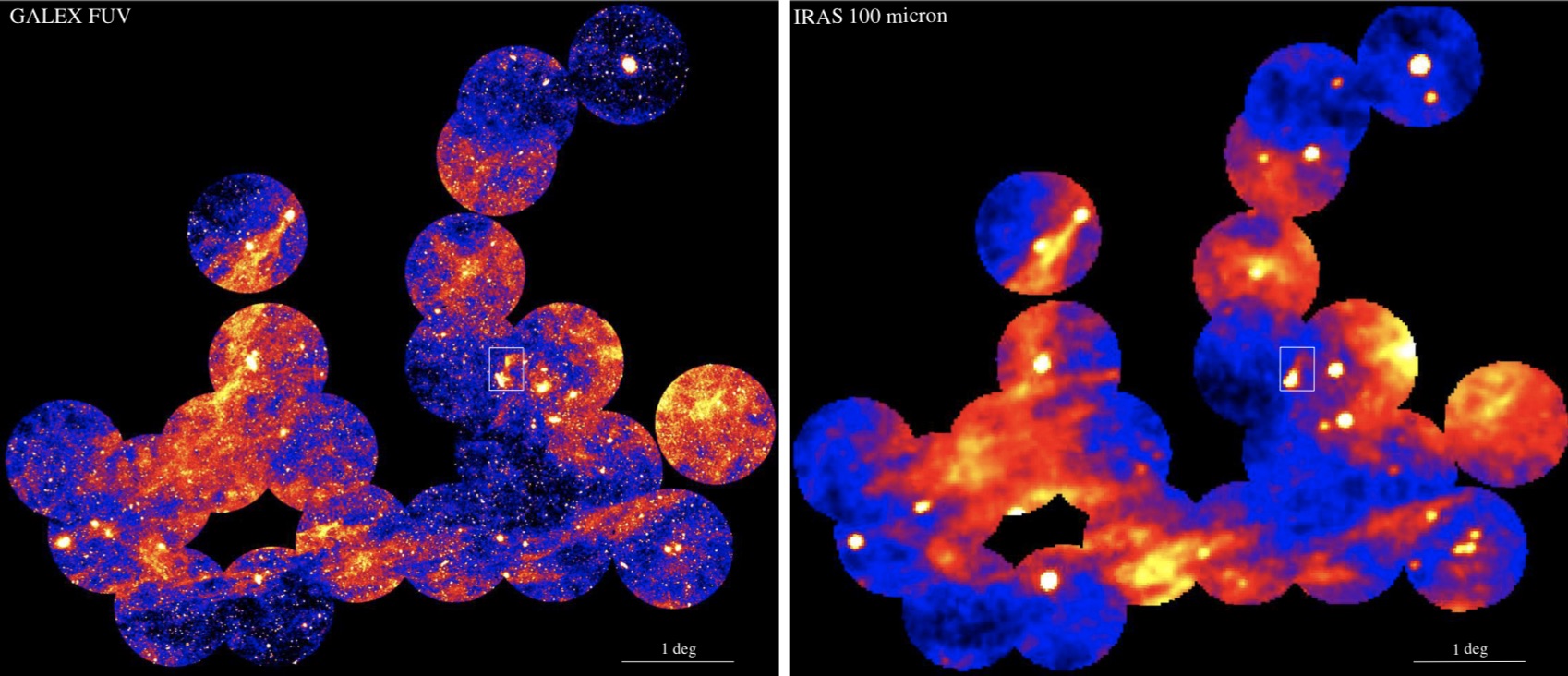We report the discovery of diffuse far-infrared and far-ultraviolet emission projected near the interacting pair NGC 4435/4438, in the Virgo cluster. This feature spatially coincides with a well-known low surface-brightness optical plume, usually interpreted as tidal debris. If extragalactic, this stream would represent not only one of the clearest examples of intracluster dust, but also a rare case of intracluster molecular hydrogen and large-scale intracluster star formation. However, the ultraviolet, far-infrared, HI and CO emission as well as the dynamics of this feature are extremely unusual for tidal streams but are typical of Galactic cirrus clouds. In support to the cirrus scenario, we show that a strong spatial correlation between far-infrared and far-ultraviolet cirrus emission is observed across the centre of the Virgo cluster, over a scale of several degrees. This study demonstrates how dramatic Galactic cirrus contamination can be, even at optical and ultraviolet wavelengths and at high galactic latitudes. If ignored, the presence of diffuse light scattered by Galactic dust clouds could significantly bias our interpretation of low surface-brightness features and diffuse light observed around galaxies and in clusters of galaxies.
Cortese, L.; Bendo, G. J.; Isaak, K. G.; Davies, J. I.; Kent, B. R.
2010, Monthly Notices of the Royal Astronomical Society, 403, L26
http://adsabs.harvard.edu/abs/2010MNRAS.403L..26C
